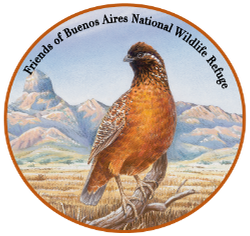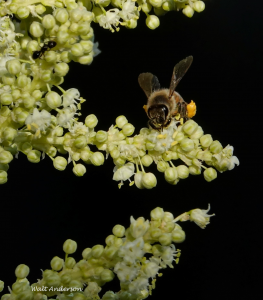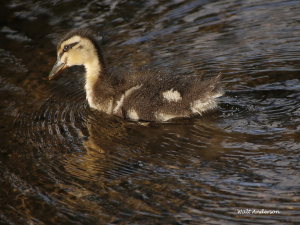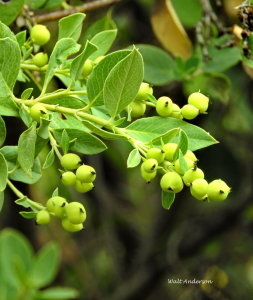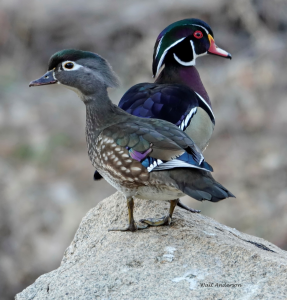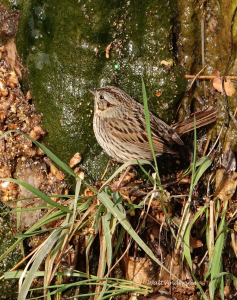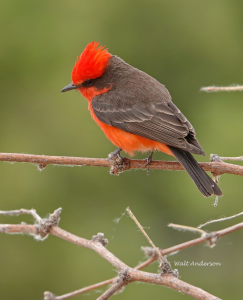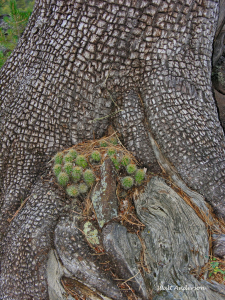Essays
Check out the nature essays! A new "Among Friends" topic will appear every three weeks!
Nolina
Throughout our grasslands, oak woodlands, and pinyon-juniper stands in Arizona, New Mexico, and northern Mexico grows Nolina microcarpa, commonly known as beargrass, sacahuista, or palmilla. “Beargrass” is an unfortunate name, as it is not a grass at all, nor is it related to the mountain plant called “beargrass” (Xerophyllum tenax). I prefer to call it simply nolina, a lovely name, though the Aztecderived name, sacahuista, is lovely too. It is impressively drought-tolerant, fire-resilient, and evergreen, so it makes a wonderful ornamental plant in our xeriscaped gardens.
Read MorePrecocity
We are all familiar with the precocious nature of Wolfgang Amadeus Mozart, performing the violin beautifully at the age of three and composing pieces of his own at five. Precocity is the development of skills considered very advanced for a given age. It comes from the Latin for “early ripening.” While Mozart was a prodigy with exceptional early talents, humans in general are altricial, born helpless and needing a long period of parental care until able to function independently. Mozart was certainly no less helpless as a newborn, but his musical abilities developed at an extraordinarily early age, thus being considered precocial compared to others in his age-class.
Read MoreJay Walking.
Arizonans harbor myths about “our” jays. I often hear folks talking about the blue jays in their yards. Well, yes, they have jays, and they are basically blue, but the proper Blue Jay is an eastern US species that has only been recorded in SE Arizona a couple times. We have four species of “blue jays” in Arizona: the Steller’s, Mexican, Pinyon, and Woodhouse’s Scrub-Jay. I’ll focus on the scrub-jay in this essay, but I’ll show examples of the others for comparison. It’s time to set the record straight, so let’s do some jay walking.
Read MoreYucca
While cacti often epitomize “desert” in North America, it’s the yuccas that are widespread and notable representatives of semiarid areas throughout much of the continent from Guatemala to southern Alberta, Baja California to Florida and up the coast to Maryland. There are almost 50 species, at least 14 in Arizona. They are completely dependent upon yucca moths for pollination, but the story is more complex than most of us realize. Let’s take a closer at look at these fascinating plants.
Read MoreSilktassel
Shrubs often fail to gather the respect they deserve. They lack the overbearing massiveness of a towering tree or the colorful brilliance of a showy wildflower. However, shrubs completely dominate the chaparral ecosystems in the West, and they create wonderful diversity in the understory of woodlands of oaks, pines, pinyons, and junipers. One of my favorites is Wright’s Silktassel, Garrya wrightii, found throughout Arizona from about 3000-8000 feet, the southern half of New Mexico, the western tip of Texas, and down to central Mexico. Let’s see what makes this shrub so likeable.
Read MoreBirding with a Bonus—A Morning in the Dells
A naturalist (or anyone who cares about nature) is an observer, a witness to the full range of life in which we are simply one player among millions. There is joy in connecting deeply with the familiar, the predictable.
Read MoreWild Wednesday. 23 March 2022. Lincoln’s Sparrow
I want to call attention to one of these rather nondescript but nevertheless beautiful birds—the Lincoln’s Sparrow. Once you become familiar with them, they may become one of your favorites, as they have for me.
Read MoreWild Wednesday. 30 March 2022. Thanks Vermilion!
On the voyage of the Beagle, Darwin was given the nickname “Flycatcher” for his skills at collecting specimens. To us, the word “flycatcher” seems obvious—a bird that catches flies. But as I have often cautioned, names can be deceiving. If you lived in Europe, Asia, or Africa, “flycatcher” would mean a member of the Muscicapidae, a large family of true songbirds collectively known as “chats, robins, and Old World Flycatchers.”
Read MoreAlligator Juniper
One of the most distinctive trees of the Southwest is the Alligator Juniper, well-named for its platy, saurian-like bark. My natural history students had no trouble learning it by appearance, and, with the mnemonic clue, “Johnny Depp,” they quickly caught on to its scientific name, Juniperus deppeana. Of course, an organism is so much more than its name, and the Alligator Juniper is special in so many ways that it earns the limelight in this essay. As you will see, this amazing plant is one of my all-time favorites, very close to my heartwood.
Read MoreAmerican Robin
Robins are the most widespread of all the American thrushes, breeding throughout nearly all of North America and wintering in most of the continental United States and Mexico.
Read More